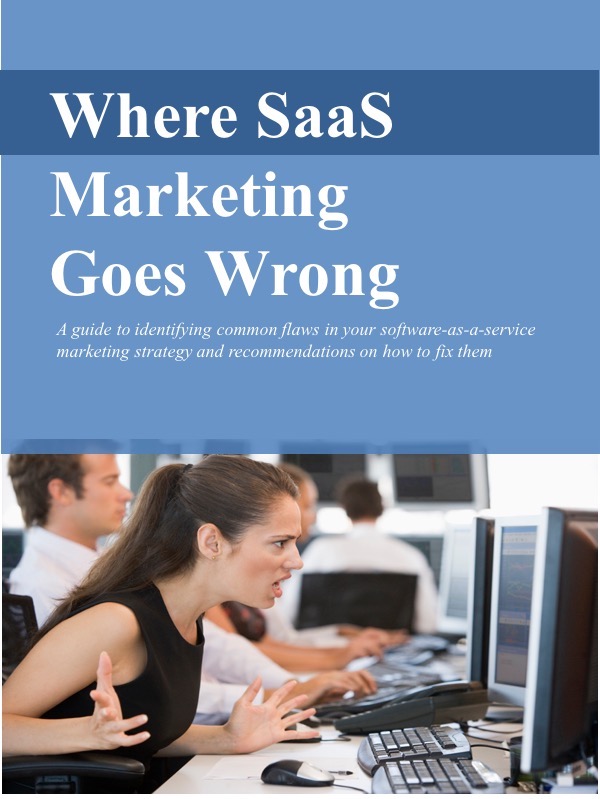Do your customers know what you’re selling?
/Sometimes marketing pros focus on the wrong things.
When there’s a problem attracting prospective customers, marketers usually look first at their lead generation programs. They ask questions like:
- Is our email campaign targeting the right people?
- Is our website visible to search engines?
- Are we participating in the right events?
- Are our social media campaigns working?”
And sometimes they will, indeed, find that certain lead gen programs aren’t working.
Or they’ll find bottlenecks or gaps in the process and they’re losing prospects somewhere in the evaluation and purchase journey.
A message problem, not a program problem

But oftentimes the problem is more fundamental. The problem is not with any particular program; the problem is with the message.
The prospective customer simply doesn’t know what the vendor is selling.
They come to the website, read the email, or see them at an event… but they can’t figure out what problem the vendor’s solution might solve for them.
They might find a long list of features and even an extended discussion on how the solution is built. But they won’t get an easy answer to a couple of simple questions:
What is this solution, and what problem does it solve for my business?
How does this happen?
Most companies start out with good answers to these fundamental questions. In fact, often the solution has been built with the precise intention to solve a particular problem.
One client of mine, for example, started life as a landlord, struggling to manage all the details of managing rental property. They couldn’t find a cost-effective solution, so they decided to build their own. Buildium has now been adopted by more than 12,000 other property managers. And it’s clear what problem they solve for their customers.
But too often this original simple idea – “let’s build a solution to a solve an urgent problem” – gets lost. Or at least it gets covered over by lots of technical details.
The messages about the product no longer focus on “what it does.” Instead, they’re all about “how it works.” A prospective customer needs to work too hard to understand what the solution is and why they might need it.
And anything that makes the prospect work too hard is usually a bad thing. These folks don’t have a lot of time to spend trying to figure out whether a particular solution is something they can use. They have day jobs. (See “Your prospect has a day job.”)
Fixing the problem
The good news is that this problem is fixable. In fact, when clients call me to ask me to help them acquire customers, I first look at their messages: Is it clear what they sell and why someone should buy it from them?
Sometimes a few tweaks can help, but sometimes a complete overhaul is in order.
There are a few different ways to develop a clearer, more effective message that better describes the solution:
- Have an outsider look at they messages, especially someone with an expert eye who’s seen a lot of them. (Drop me a note if you’d like to talk.)
- Ask existing customers to explain why they bought the solution and why they find it useful.
- Listen to the most effective sales person present the solution to a prospect. Often they’ve developed a simpler, more compelling message than the “official” version.
- See how direct competitors present themselves. While it’s important to distinguish a solution from competitors, it’s worth seeing which elements are working for them.
Create a messaging guide
And once you’ve crafted a concise, clear and compelling value proposition and messages – something your prospective customers will quickly grasp – it’s important to write it down.
I often do this in the form of a “Value Proposition and Messages Guide.” (See “To deliver a consistent message, you need a script.”) This is something that you can cut and paste from liberally as they prepare websites, email, white papers, or any other marketing material.
When marketing professionals are struggling to generate more leads, qualify more opportunities, and nudge people toward a purchase, sometimes the problem is in the programs. They’re not run well or they’re poorly targeted.
But often the problem isn’t with the programs; the problem is with the message. Prospective customers simply can’t figure out what exactly you sell and why they ought to buy it.
Copyright ©2016 SaaS Marketing Strategy Advisors, Inc. All rights reserved.
